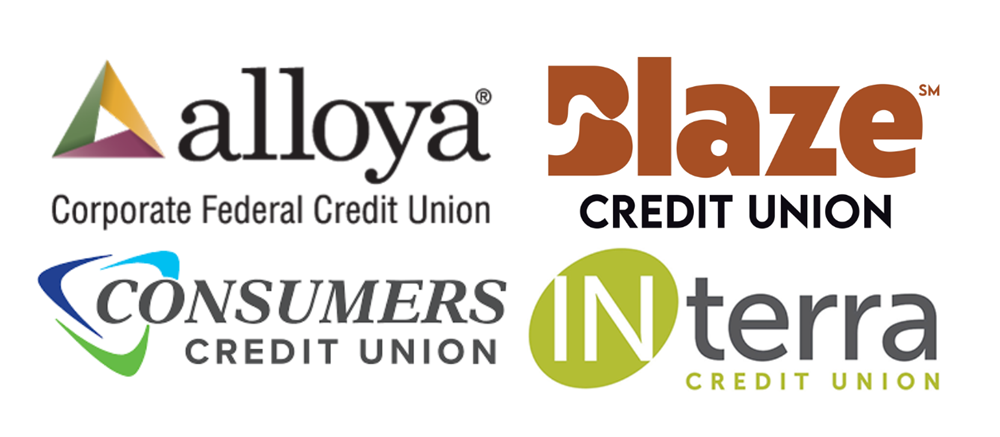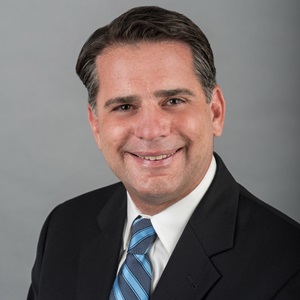
A first-of-its-kind collaboration could signal a new avenue for liquidity for mid-sized institutions.
Alloya Corporate Federal Credit Union announced the settlement of its first multi-issuer auto loan asset-backed securitization (ABS) in July, pooling together auto loans originated by three of its member credit unions: Blaze Credit Union, Consumers Credit Union, and Interra Credit Union.
Although selling loans is a well-established financing tool in the credit union industry, packaging loans from separate institutions into a single deal is not. According to Alloya’s chief investment officer, Andy Kohl, it was the bundle’s diversity — three credit unions across three states provided a wide spread — that attracted investors.
“Every tranche was oversubscribed, some seven times over,” he says. “The demand was strong.”
A Hunt For Creative Solutions
The approach required the four institutions — all with their own underwriting, lending, and operational teams — to work closely together for a little more than a year; after which, the corporate credit union sold $150 million in bonds to 16 investors.

Kohl says the idea for a multi-issuer ABS sprang from an effort to identify alternative liquidity solutions post-pandemic.
“During COVID, all that stimulus money flowed in and then out again very rapidly,” he says. “Historically, credit unions needing liquidity could turn to other credit unions that had it, but in that situation, fewer credit unions had liquidity available, and the whole system felt the strain.”
Securitization opens access to investors outside of the credit union ecosystem, such as insurance companies, pension funds, and investment firms. However, it can be expensive and complex, making it unrealistic for smaller financial institutions. Alloya hoped a multi-issuer approach would help circumvent that challenge.

Talks began internally in early 2024. Ryan McCarroll, Alloya’s vice president of Capital Markets, led the charge and formalized the initiative in June.
“None of us knew exactly what this would require,” McCarroll says. “We had to learn a lot on the fly, which meant urgent requests, lots of asks, and figuring things out as we went.”
According to McCarroll, working with the right people was an essential component of success.
“We needed partners willing to ‘build the airplane while flying it,’ and this group stepped up,” he says.
Kohl echoes that sentiment.
“The three credit unions we partnered with couldn’t have been better,” the CIO says. “They were motivated by service to the system, not immediate need. That was key.”
Cooperation Over Competition
You wouldn’t see something like this in the banking world. For us, it was about supporting the broader system.
Blaze Credit Union ($4.4B, Falcon Heights, MN saw the opportunity as a way to give something back to the industry.

“Ten or 15 years ago, we needed our leagues and corporate credit unions to step up for us, and they did,” says Justin Burlseon, the credit union’s senior vice president and chief operating and financial officer. “Now that we’re larger, we see it as our duty to do the same for others. You wouldn’t see something like this in the banking world. For us, it was about supporting the broader system.”
Similarly, Jim Henning, chief financial officer at Interra Credit Union ($1.9B, Goshen, IN), says the collaboration was a way to access capital markets that had historically been closed to the Indiana cooperative.
“Being part of building that pathway was important, regardless of immediate need,” he says.
Regardless of individual reasons, all three credit unions — Blaze, Interra, and Consumers — say buy-in was unanimous.

“Our CEO [Amy Sink] had been behind a strategy like this for years,” Henning says. “So internally and with the board, it was an easy sell.”
At Consumers Credit Union ($4.2B, Lake Forest, IL), chief financial officer Sean Bowers says prior experience selling loans individually put his institution’s board at ease with the strategy. Plus, it required no extra hurdles when it came to staffing.
“We actually budgeted for this in 2025 and brought it to the finance committee,” Bowers says.
The collaboration served as a valuable learning experience for all parties involved. According to Bowers, it challenged his team to learn more about the credit union’s own data and loan portfolio.

“We had to dig into disclosures and requirements and really analyze things differently,” he says. “Being part of this deal gave us new insights into how our portfolio is structured and how to think about future pricing strategies.”
Consumers broke down its pricing by credit grade and shared those results internally to see how it could better align pricing with member value while staying relevant to the market. Over at Blaze, Burleson says the deal motivated his staff members to realize they can do more than previously thought.
“Without being pushed, we might not have taken on a deal like this,” he says. “But the team rose to the challenge.”
At Interra, Henning says joining forces with two other credit unions was motivating.
“It wasn’t just about us at Interra succeeding or failing,” he says. “If we didn’t deliver, the others would feel it too. That accountability pushed us forward.”
Blazing The Trail For Future Deals
Greg Hill is a strategic initiatives consultant at Alloya. Looking back at the effort from start to finish, he says what stood out to him most was how open everyone’s teams were.

“Every part of the process was a lesson learned,” he says. “None of us had done this before, so everything from legal to ratings agencies to structuring was new. No one was rigid about how things had to be done. That openness let us build a template that not only worked for this deal but also will help future ones.”
Burleson called the process an example of the industry’s cooperative principles in action.
“Philosophically, this is proof of the credit union difference. We sometimes get flack for our tax status, but this is why we’re structured differently,” he says.
“I’ll second that word for word. Underline it, bold it, italicize it,” Henning says.
According to Hill, now that Alloya has a playbook, the goal is to bring in more credit unions and complete more deals.
“The $150 million was a proof of concept,” he explains. “We wanted to test the structure, the ongoing management, and the investor appetite. This opens the door for somewhat smaller organizations to participate by partnering together.”
Henning calls the strategy a huge increase in access.
“Before this, maybe 100 credit unions could realistically access the secondary markets through this type of model,” he says. “With what Alloya built, that number could expand to 1,000.”
Consumers’ CFO encourages other credit unions to get involved.
“This isn’t a one-and-done,” Bowers says. “There will be future deals, and the more participants, the stronger the program becomes. Even if you don’t need liquidity today, it’s another tool in the toolbox.”